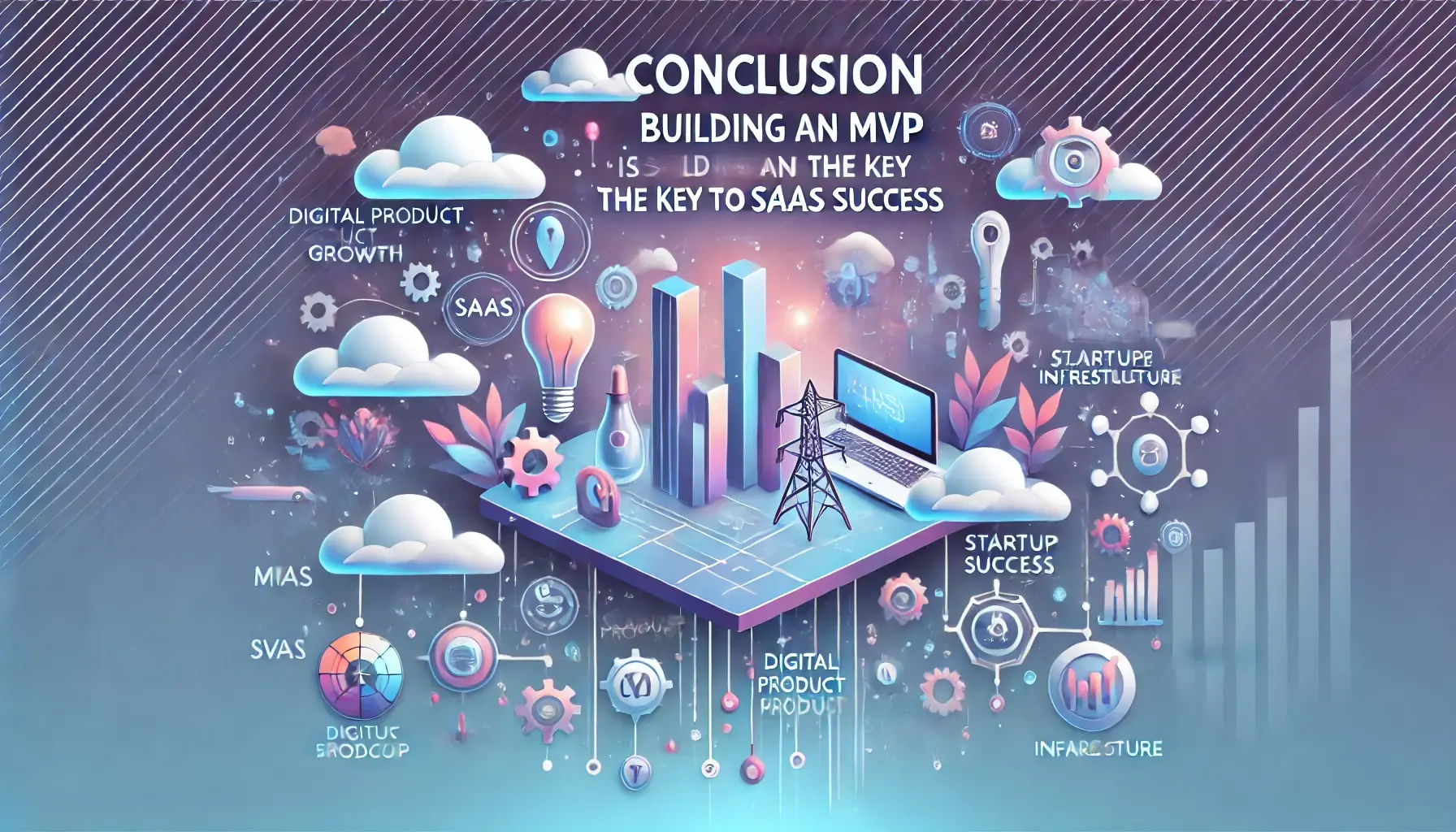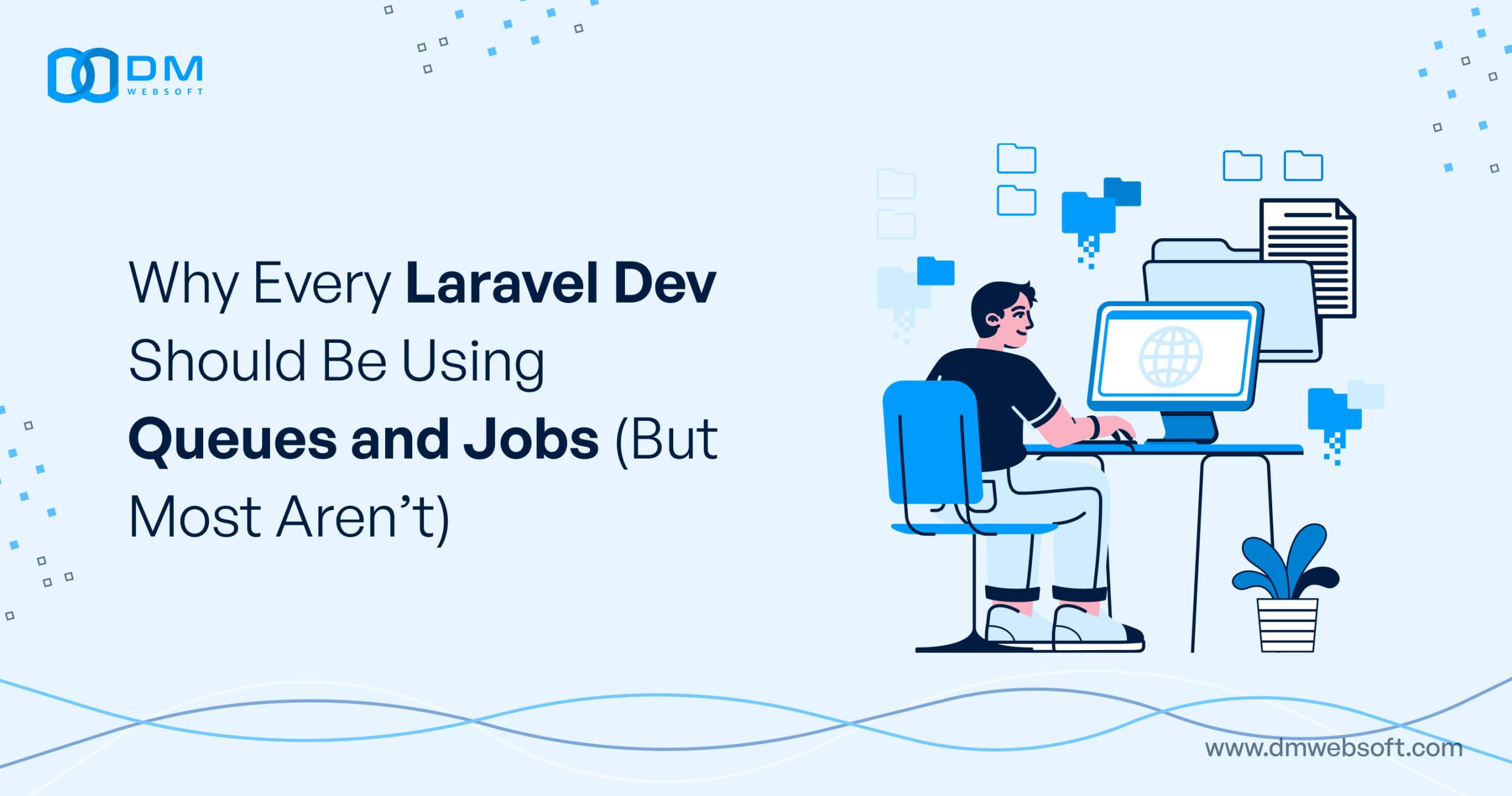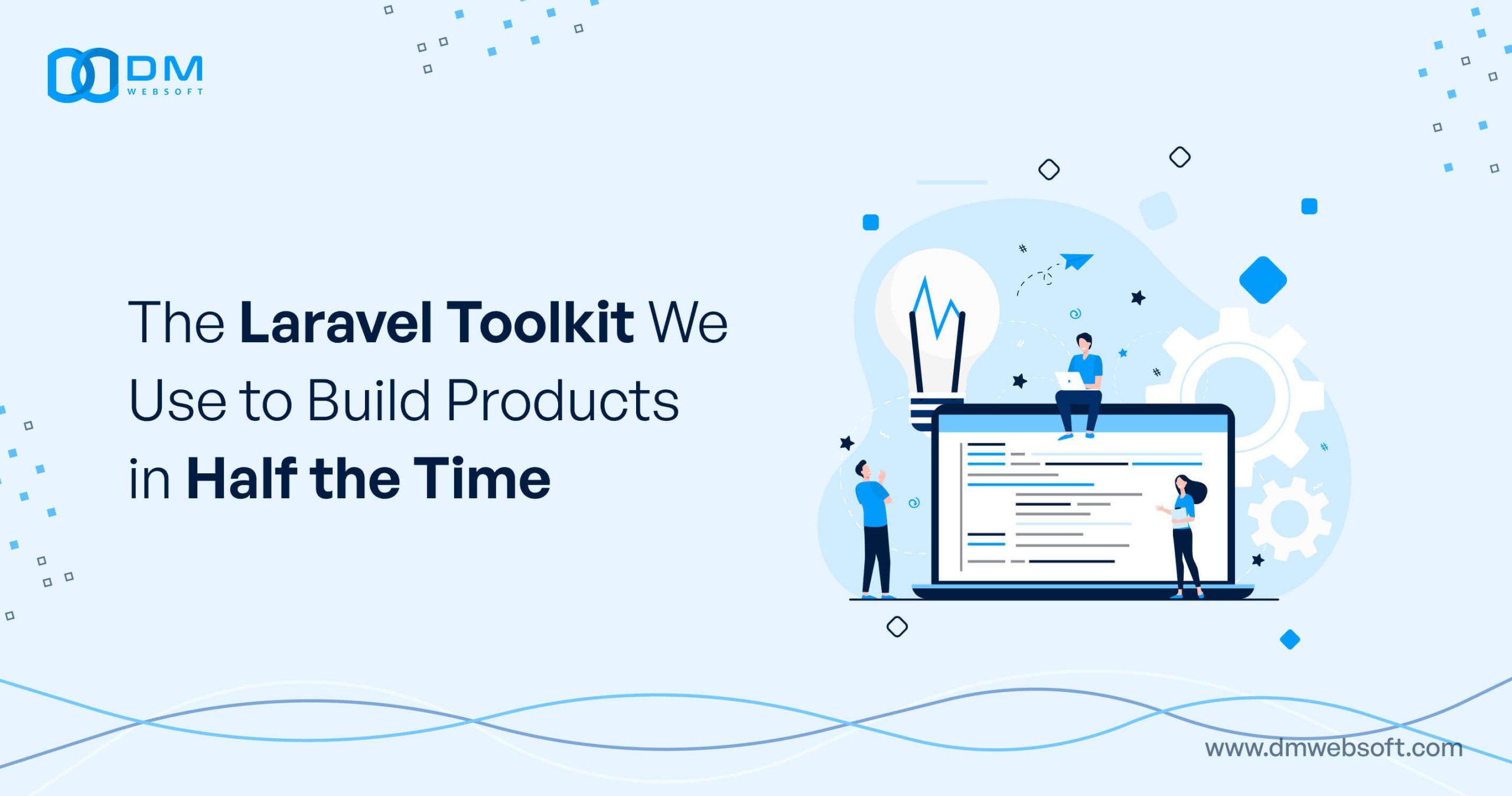DM WebSoft LLP exceeded our expectations! Their seasoned team of experts delivered a website that perfectly captures our brand essence. Their 15+ years of experience truly shine through in their exceptional web development skills.
Why Every SaaS Founder Needs an MVP And How to Build One That Converts

TABLE OF CONTENT
Introduction: Why Every SaaS Founder Needs an MVP
Key Steps to Building an MVP That Converts
How DM WebSoft LLP Helps SaaS Founders Build High-Converting MVPs
Common Mistakes SaaS Founders Make When Building an MVP
How to Measure the Success of Your SaaS MVP
Scaling Your SaaS Product Beyond the MVP
The Role of User Feedback in Refining Your SaaS MVP
Conclusion: Building an MVP is the Key to SaaS Success
Get in Touch
Introduction: Why Every SaaS Founder Needs an MVP

Developing a SaaS product from scratch is a time, money, and resource-intensive investment. Most founders have an awesome idea for a digital product but tend to get stuck on validating market demand, funding, and making sure their solution is feasible before they scale. This is where an MVP is useful. An MVP allows SaaS founders to ship quickly, test their assumptions, and iterate on their product from real user feedback, reducing risk and increasing the chances of long-term success.
One of the best benefits of an MVP is faster time-to-market. With a competitive SaaS market, time is critical. The more time it takes to build a product, the more likely that someone else will launch a comparable or superior alternative. Rather than investing months or years building a feature-rich SaaS platform, an MVP allows founders to concentrate on essential functionalities, launch a functional version, and gain user feedback in real-time. Early adopters provide excellent feedback that assists in iterating on the product so updates released in the future are customized to actual user requirements.
The second key advantage of an MVP is that it is cost-saving. It can be expensive to develop a SaaS product from scratch, especially for bootstrapped businesses. Founders who invest heavily in development before they have tested their concept risk spending money on features that customers don’t need or want.
An MVP reduces the risk by focusing on required features, allowing businesses to deploy resources effectively. All the SaaS companies also use no-code and low-code platforms to create MVPs at lower costs without the need for large development teams in early stages.
An MVP is also a strong instrument for winning over investors and early adopters. Investors are more willing to invest in a SaaS startup that already has proven demand in the market, active users, and defined data on customer behavior.
Without an MVP, it is hard to raise funds, as investors are less likely to fund an untested idea. Moreover, early adopters utilizing the MVP can spread the word, give testimonials, and make referrals, creating word-of-mouth growth and establishing trust with prospective customers.
By releasing an MVP, SaaS founders are able to validate product-market fit, iterate on their business model, and acquire customers and investors, all in a manner that reduces financial and operational risks. It creates a strategic foundation for scaling into a full-featured SaaS product that serves both market demand and user needs.
Key Steps to Building an MVP That Converts

While building an MVP is a smart decision, not all MVPs lead to a successful product. Some of them fail due to the mere fact that they have not performed market research, do not have proper user experience, or are missing features required to trigger conversions. For SaaS founders to build an MVP that not only validates an idea but also gets and keeps customers, there is a methodical approach to be taken:
The first and most important step is identifying the core of the problem your SaaS solution is targeting. Most startups are a failure because they are attempting to build a product with a ton of features rather than focusing on a specific pain point that is important to users. A successful MVP must be built upon a clearly defined, well-articulated problem with an existing demand in the market. Customer interviews, competitor research, and market research validate that the problem is real and that individuals are willing to pay for a solution.
After the issue is defined, the selection of appropriate technology and platform for the MVP is vital. Most SaaS entrepreneurs currently utilize no-code and low-code platforms such as Bubble, Webflow, Adalo, and Make (Integromat) to prototype and deploy their products rapidly. No-code development allows companies to develop web applications, mobile apps, and workflow automation tools without an entire engineering staff. But if the product needs sophisticated backend features or integrations, collaboration with a seasoned development team guarantees long-term scalability.
The second step is determining the key features that the MVP should have. The aim is to create the most basic version of the product that is valuable to users. Including too many features upfront can slow down launch and introduce unnecessary complexity. The most effective MVPs concentrate on one or two essential functionalities that address the main pain point. For instance, if developing a subscription-based SaaS product, the MVP could have only a user dashboard, billing integration, and one main service feature, with other features reserved for subsequent iterations.
Once the MVP has been created, UX and conversion optimization become priorities. An MVP should be easy to use, visually attractive, and well-structured. Users need to be able to sign up, access the most important features, and perform crucial actions without difficulty. The use of onboarding tutorials, tooltips, and automated email sequences allows for users to be retained and invited back.
Finally, prior to introducing the MVP, founders must enforce data tracking and analytics to measure user engagement. Google Analytics, Mixpanel, or Hotjar are tools which give insights as to how the users are visiting the platform, where they leave off, and what they deem most useful of the features offered.
This metrics-based strategy lets founders iterate very fast, fix the product upon actual user conduct, and increase conversions, by taking these steps, SaaS entrepreneurs can develop an MVP that not only confirms market demand but also brings in paying customers and lays the ground for scalable expansion.
How DM WebSoft LLP Helps SaaS Founders Build High-Converting MVPs

At DM WebSoft LLP, we understand that building an MVP is more than just developing a basic version of a SaaS product—it’s about creating a strategic, data-driven solution that converts users into paying customers. Our team specializes in MVP development using no-code, low-code, and full-stack technologies, ensuring that SaaS founders can launch quickly, optimize efficiently, and scale successfully.
Our methodology starts with an in-depth grasp of your SaaS concept, target market, and business objectives. We collaborate with founders to determine the underlying issue, specify the most crucial features, and choose the most suitable development path. If you require a full-fledged web application, an AI-driven SaaS solution, or an automated business platform, our proficiency guarantees that your MVP is easy to use, high-performance, and ready for market.
In addition to development, we prioritize user experience (UX) and conversion optimization. Most SaaS MVPs are unsuccessful because of bad onboarding, ambiguous navigation, or poor engagement strategies. We make sure that your product is intuitive, retention-optimized, and built with smooth onboarding flows to drive long-term user adoption.
We also incorporate advanced analytics, marketing automation, and growth strategies to assist SaaS founders in monitoring critical metrics, gauging user behavior, and enhancing conversion rates. Our team ensures that your MVP is not only a prototype but also a scalable business asset that can change based on actual customer feedback and market trends.
For SaaS entrepreneurs who need to scale up from an MVP to a full-fledged scalable SaaS product, we offer bespoke software development, API connections, and cloud solutions that support long-term success. Whether you are targeting investors, signing on enterprise customers, or going global, DM WebSoft LLP is equipped to drive your SaaS concept to market-leading product.
If you’re prepared to create a high-converting MVP that engages and generates revenue, reach out to DM WebSoft LLP now. Let us make your SaaS dream come true with a data-driven, scalable, and market-ready MVP.
Common Mistakes SaaS Founders Make When Building an MVP

While creating an MVP is an important milestone for every SaaS startup, most founders make unnecessary errors that result in lost time, money, and opportunities. Some startups create an MVP without strategy, while others over-engineer their first product, postponing their market demand validation. Learning about these usual mistakes can keep founders on course, streamline development, and roll out a successful MVP that converts users into customers.
Perhaps one of the biggest SaaS founding errors is that an MVP should be built with too many features. Most of them believe adding more functionality to the product makes it more desirable, but instead, it only contributes to more development time, cost, and confusion among the users. The MVP should simply solve one crucial issue effectively. Overloading it with extra features takes the focus away from the value proposition and keeps founders from getting clean, actionable feedback from early adopters. The optimal strategy is to ship with a minimal set of core features, observe how users use them, and build out incrementally based on data-driven insights.
Another significant pitfall is forgoing market research and validation. Some founders are trapped by believing that their idea is wonderful just because they do themselves. Without the problem being validated with actual prospective customers, the danger of creating something people don’t actually want is highly likely. Surveys, interviewing prospective users, reviewing competitors, and testing landing pages should be done before spending money on development. This makes sure that the MVP is constructed on actual customer needs, rather than assumptions.
Most SaaS startups also lack good user experience (UX) design in their MVP. Despite having a good product that actually solves an important problem, an incomprehensible or messy user interface (UI) will send users running away. An MVP needs to be elegantly designed, intuitive, and beautiful enough that it will make users go about performing necessary actions with minimal friction. Having onboarding process seamlessly integrated, tooltips in the app, and auto-guiding tutorials will hugely help retain users and engage them.
The other frequent mistake is not doing marketing and user acquisition. Other founders believe that if they create an excellent MVP, the users will magically find it. Without a go-to-market plan, even excellent products will have difficulty getting started. SaaS founders need to spend money on SEO, content marketing, social outreach, and paid ads in order to acquire early adopters. Having a pre-launch email list, beta testing scheme, or referral rewards can also generate early momentum and establish a loyal user base.
By shunning these common pitfalls, SaaS entrepreneurs can save time, cut costs, and improve their odds of developing an MVP that successfully attracts and converts users. Prioritizing simplicity, validation, UX, and marketing ensures that the MVP is a solid foundation for growing into a successful SaaS business.
How to Measure the Success of Your SaaS MVP

After an MVP is released, the subsequent key step is to measure its performance and decide if it effectively proves the business concept. SaaS entrepreneurs need to monitor key indicators that reflect user interest, interaction, and revenue potential. If measurement is not done, there is no way to know if the MVP is successful or requires changes. By emphasizing data-driven decision-making, startups can improve their product and boost conversion rates in the long run.
One of the key metrics to monitor is the activation rate—the rate at which users sign up and take a crucial action in the product. This may be setting up a profile, adding an integration, or utilizing a core feature. The higher the activation rate, the more users see value in the MVP. The lower the activation rate, the more work is required in onboarding, UX, or feature clarity.
Another essential KPI is retention. Most SaaS entrepreneurs concentrate too heavily on signing up new users without regard to making the current users remain. Retention is a good predictor of long-term product-market fit. If the users sign up and leave in a short time, it indicates the MVP is not providing sustained value. A breakdown of drop-off points, feedback surveys, and session lengths can provide insights into what needs to change.
Conversion rates are yet another such metric. There needs to be a definite call-to-action (CTA) within an MVP, urging people to do their next thing on your site — either sign up for a paid version, arrange for a demo, or take a newsletter, say. Monitor how many people convert from freemium plans to paid accounts, and insights about whether value propositions and the pricing model work come through. When conversion rates are low, founders can have to lower prices, better message, or provide more incentives.
Customer feedback is also crucial in measuring the success of an MVP. Founders must proactively gather user feedback via surveys, in-app notifications, and customer interviews. Users will point out pain points, missing features, and areas of frustration, enabling startups to focus on improving those that are most important. Several SaaS companies utilize tools such as Intercom, Typeform, or Hotjar to gather insights and make improvements accordingly.
Lastly, tracking churn rate (the rate at which users cancel or discontinue using the product) assists in establishing if the MVP is holding long-term value. High churn may indicate issues with pricing, feature constraints, or customer experience. Solving these issues at an early stage avoids revenue loss and keeps the SaaS product competitive.
By monitoring these metrics of success—activation rate, retention, conversion rates, customer feedback, and churn—founders are able to make data-driven adjustments that drive user satisfaction and the likelihood of successfully scaling the SaaS business.
Scaling Your SaaS Product Beyond the MVP

Once an MVP has been validated, the next challenge is scaling it into a fully developed SaaS product that can handle growing users, advanced features, and market expansion. Many startups struggle at this stage, as scaling requires careful planning, technical upgrades, and business growth strategies. A successful transition from MVP to full-scale SaaS involves enhancing product performance, expanding marketing efforts, and optimizing monetization strategies.
The first step in scaling a SaaS product is improving infrastructure and performance. While an MVP may run on a simple backend, a growing user base requires better database management, server optimization, and security enhancements. Many SaaS companies transition to cloud-based hosting solutions like AWS, Google Cloud, or Azure to handle higher traffic and ensure reliability. Implementing scalable APIs, load balancing, and automated backups helps prevent downtime and improves user experience.
Feature expansion is another key aspect of scaling. Based on user feedback and data insights, founders should introduce new functionalities that enhance the product’s value. However, feature expansion should be strategic—adding too many features at once can create complexity and confuse users. Instead, iterative updates based on user needs ensure that growth aligns with demand. SaaS founders should prioritize integrations, AI-driven automation, and collaboration tools that improve engagement without overcomplicating the product.
Scaling also requires stronger marketing and sales strategies. While an MVP relies on organic growth and early adopters, a full SaaS product needs targeted marketing campaigns, paid advertising, and outreach to enterprise clients. Investing in SEO, content marketing, social media ads, and partnerships increases visibility and attracts a larger audience. Additionally, implementing automated email sequences, retargeting campaigns, and lead generation funnels ensures that potential customers are nurtured into paying subscribers.
Monetization optimization is another crucial part of scaling. Many SaaS companies start with a freemium or low-cost pricing model, but as they grow, they must refine their pricing strategies. Introducing tiered pricing, enterprise plans, and usage-based billing allows for higher revenue generation. Additionally, improving customer support, onboarding experiences, and customer success initiatives helps retain users and reduce churn.
At DM WebSoft LLP, we specialize in helping SaaS startups scale beyond their MVP by providing custom development, API integrations, performance optimization, and growth strategy consulting. Whether you need to optimize your backend, expand your feature set, or enhance user engagement, our team ensures that your SaaS product evolves into a highly scalable, market-leading solution.
By focusing on infrastructure, feature expansion, marketing, and monetization, SaaS founders can successfully transition from an MVP to a fully scalable SaaS business with long-term growth potential.
The Role of User Feedback in Refining Your SaaS MVP

Building an MVP is just the first step in launching a successful SaaS product. Once the initial version is live, the most valuable asset a founder can leverage is user feedback. Understanding how real users interact with the product, what they find useful, and where they struggle allows businesses to refine their offering, increase engagement, and improve conversions. SaaS companies that actively collect and act on user feedback can iterate faster, enhance their product-market fit, and ultimately scale more effectively.
The first step in gathering meaningful feedback is establishing direct communication channels with users. Many SaaS companies use in-app surveys, email follow-ups, and customer support chatbots to collect insights from early adopters. Tools like Typeform, Hotjar, and Intercom allow founders to capture user opinions in real time, helping them understand what features users love and where they experience friction. Founders should also engage in one-on-one interviews with power users, as these conversations provide deeper insights into user behavior and unmet needs.
Another effective method for analyzing feedback is tracking user behavior with analytics tools. Platforms like Google Analytics, Mixpanel, and FullStory allow SaaS founders to monitor how users navigate the application, where they drop off, and which features they use most. If a core feature has low engagement, it may indicate usability issues or lack of clarity in the onboarding process. Identifying these friction points early helps teams prioritize improvements that drive higher retention and engagement.
Iterating based on user feedback requires a structured approach. Many successful SaaS companies follow the build-measure-learn cycle, where they introduce small updates, measure their impact, and refine further. Instead of making large, time-consuming changes, SaaS founders should focus on incremental improvements, such as enhancing an onboarding flow, refining UI design, or optimizing pricing structures. A/B testing different variations of a feature or UI layout helps determine what resonates best with users before rolling out broader updates.
User feedback also plays a critical role in shaping product roadmaps. Founders often have a long-term vision for their SaaS product, but real-world usage may reveal new opportunities or unexpected challenges. Prioritizing features based on actual user demand rather than assumptions ensures that development efforts are aligned with business growth. Many SaaS companies implement a feature request board or public roadmap, allowing users to vote on what improvements they want most. This not only fosters engagement but also helps SaaS startups build a loyal user community.
Ultimately, a SaaS MVP should be an evolving product, not a static one. The most successful SaaS companies continuously refine their offering based on user insights, market trends, and competitive landscape changes. By actively listening to customers, iterating quickly, and maintaining a flexible development approach, SaaS founders can create a product that delivers long-term value and drives sustainable growth.
Conclusion: Building an MVP is the Key to SaaS Success

All successful SaaS companies begin as an idea—yet without the MVP, this idea remains unwitnessed and untested. The MVP path enables founders to ship rapidly, reduce risk, and accumulate first-hand observations to inform the product’s final outcome.
With their emphasis on must-have features, customer input, and rapid updates, SaaS startups are able to perfect the product-market match, appeal to investors, and scale with minimum waste.
Another huge advantage of an MVP is that it prevents expensive development errors. Rather than investing years or months developing a feature-rich application that may or may not gain traction with users, SaaS entrepreneurs can launch a stripped-down version, validate its worth, and make informed improvements that are driven by data. This lean startup approach guarantees resources are well invested and development occurs in alignment with real market demand.
An MVP also serves the function of customer acquisition and marketing. Most SaaS companies wrestle with growth because they’re only concerned with developing the product but not how to get users and retain them. By entering the market early and interacting with early users, companies can create customer-driven growth strategies, streamline messaging, and optimize pricing models that turn free users into paying users.
Scalability is another important consideration that an MVP addresses. The SaaS industry is extremely competitive, and businesses that scale too rapidly without a proven foundation tend to experience technical problems, excessive churn, or financial instability. An MVP enables founders to scale infrastructure, pinpoint bottlenecks, and hone monetization plans.
An MVP helps SaaS founders validate their idea, test market demand, and refine features before full-scale development.
Focus on solving a clear problem, designing an intuitive UI, and collecting user feedback for continuous improvement.
Monitor activation rate, user retention, conversion rates, and customer feedback to measure success.
Optimize infrastructure, expand features based on user demand, and implement marketing strategies for growth.
Yes, DM WebSoft LLP specializes in MVP development, ensuring SaaS startups build scalable and high-performing products.
Get Started Now !
What’s the Process ?
Request a Call
Consultation Meeting
Crafting a Tailored Proposal
Get Started Now !
Real Stories, Real Results. Discover What Our Clients Say

Working with DM WebSoft LLP was a game-changer for our business. Their technical prowess and innovative solutions transformed our online presence. A highly recommended web development agency with a stellar track record.

We are thrilled with the results DM WebSoft LLP delivered. Their deep understanding of web development coupled with years of expertise ensured a seamless and visually stunning website. True professionals!

In a digital age where first impressions matter, DM WebSoft LLP crafted a website that speaks volumes. The team’s attention to detail and commitment to quality set them apart. Thank you for making our vision a reality.

DM WebSoft LLP’s team demonstrated unparalleled expertise. Their ability to navigate complex technical challenges with ease is truly commendable. Choosing them for our web development needs was the best decision.

Exceptional service, unmatched skills! DM WebSoft LLP stands out as a leading web development agency. Their collaborative approach and commitment to excellence make them our go-to partner for all things web-related.

DM WebSoft LLP turned our ideas into a digital masterpiece. The seamless communication and timely delivery of our project showcased their professionalism. Highly impressed with the level of creativity and skill.

Our experience with DM WebSoft LLP was nothing short of amazing. From concept to execution, their team provided top-notch web development services. A reliable partner for businesses looking to elevate their online presence.

DM WebSoft LLP’s team of tech experts is second to none. Their wealth of experience reflects in the quality of their work. Our website not only meets but exceeds industry standards, thanks to their dedication.

Choosing DM WebSoft LLP was the best investment for our web development needs. Their team’s proficiency, coupled with a customer-centric approach, made the entire process smooth and enjoyable. A pleasure to work with!





